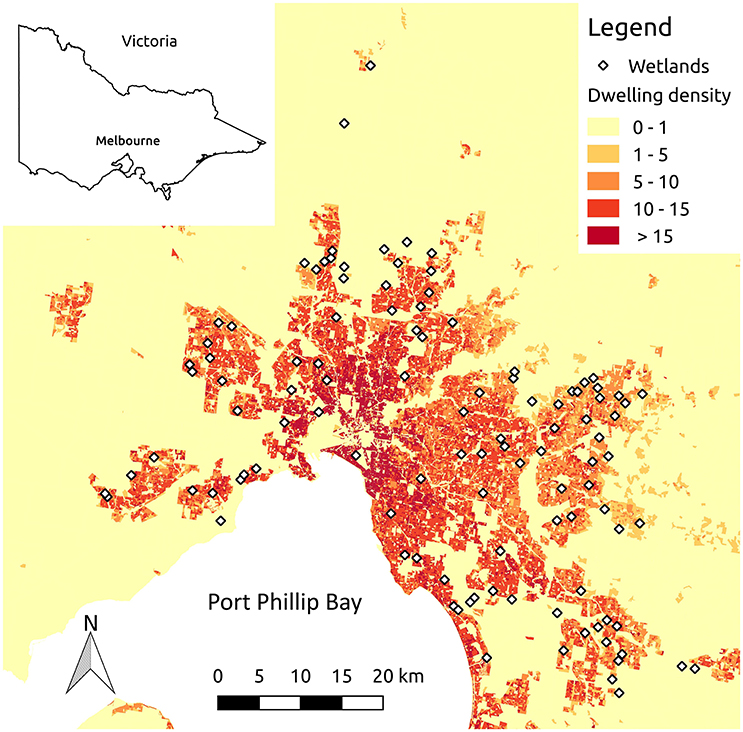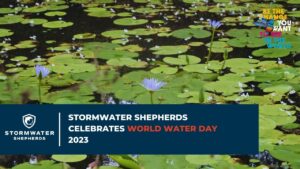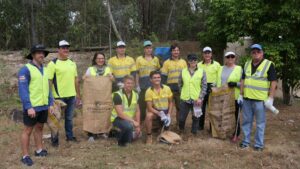AUTHORS
Stephen Marshall, David Sharley, Katherine Jeppe, Simon Sharp, Gavin Rose and Vincent Pettigrove
Centre for Aquatic Pollution Identification and Management, School of Bioscience, The University of Melbourne, Parkville, VIC, Australia
Trace organic compounds associated with human activity are now ubiquitous in the environment. As the population becomes more urbanized and the use of pesticides and person care products continues to increase, urban waterways are likely to receive higher loads of trace organic contaminants with unknown ecological consequences. To establish the extent of trace organic contamination in urban runoff, concentrations of emerging chemicals of concern were determined in sediments from 99 urban wetlands in and around Melbourne, Australia between February and April, 2015. As a preliminary estimation of potential risks to aquatic biota, we compared measured concentrations with thresholds for acute and chronic toxicity, and modeled toxic units as a function of demographic and land use trends. The synthetic pyrethroid insecticide bifenthrin was common and widespread, and frequently occurred at concentrations likely to cause toxicity to aquatic life. Personal care products DEET and triclosan were common and widely distributed, while the herbicides diuron and prometryn, and the fungicides pyrimethanil and trifloxystrobin occurred less frequently. Toxic unit modeling using random forests found complex and unexpected associations between urban land uses and trace organic concentrations. Synthetic pyrethroid insecticides were identified as emerging compounds of concern, particularly bifenthrin. In contrast with previous surveys, the highest bifenthrin concentrations were associated with lower housing and population density, implicating low-density residential land use in bifenthrin contamination. We discuss the implications for pesticide regulation and urban wetland management in a global context.
INTRODUCTION
Synthetic organic compounds are ubiquitous in modern society. Biocides such as disinfectants and pesticides have revolutionized agriculture and sanitation; however, their persistence in the environment may be harmful to aquatic life. Emerging chemicals of concern include personal care products and pesticides which persist in the environment with the potential to cause significant toxicity to aquatic life. These chemicals of concern have been detected in rivers worldwide (Schäfer et al., 2011a; Nowell et al., 2013) and in Australia (Scott et al., 2014), but their occurrence and distribution in the urban environment remain poorly characterized.
Synthetic pyrethroid insecticides currently fulfill many of the residential needs previously met by organochlorines and organophosphates. Their efficacy, persistence, and perceived safety to users have made them popular with consumers worldwide. For example, many persistent insecticides sold for domestic use in Australia now contain synthetic pyrethroids (APVMA, 2016), and these products are popular with both residents and professional pest controllers. Urban use of pyrethroids has been linked with high concentrations in urban streams and wetlands (Amweg et al., 2006b; Nowell et al., 2013; Sun et al., 2015). Based on international surveys of urban streams, residues of synthetic pyrethroids are likely to enter Australian urban water bodies, yet most monitoring to date has measured only concentrations in water (Scott et al., 2014), where they rarely occur due to their extreme hydrophobicity. A recent survey of urban wetlands which sampled both matrices, found synthetic pyrethroids were rare in water, but occurred in sediments at potentially toxic concentrations (Allinson et al., 2015). As the urban population continues to grow there is an urgent need to understand the sources, transport and fate of these emerging chemicals of concern.
Personal care products such as triclosan are widely used in consumer cleaning and personal care products. Triclosan is a persistent anti-bacterial with the potential to accumulate in the aquatic environment (Halden and Paull, 2005). The long-term effects of this biocide are not yet well known, however, it has the potential to alter bacterial communities and contribute to the spread of resistant bacterial strains (Drury et al., 2013). Triclosan and related personal care products have been detected in urban waterways internationally (Halden and Paull, 2005; Chen et al., 2014), and are widespread in Australian rivers (Scott et al., 2014), yet primary sources and transport are poorly understood. Given the limited monitoring of sediment to date, there is a need to understand the spatial distribution of these contaminants in the urban environment.
The composition of urban runoff provides a snapshot of contaminants in the built environment, so improved understanding of the factors influencing contaminant loads has important implications for human exposure, chemical regulation, and urban planning. Constructed wetlands for stormwater treatment have become popular worldwide (Vyamzal, 2010), and are effective traps for nitrogen, phosphorus and hydrophobic pollutants (Malaviya and Singh, 2012). This makes them ideal for surveying the distribution of hydrophobic trace organics in the urban environment. Our study area was Melbourne, Australia, which has grown rapidly in both population and urban area over the last 30 years. During this time, approximately 600 wetlands have been constructed to treat urban runoff, providing an ideal opportunity to evaluate spatial trends and impacts of changing land use patterns on emerging chemicals of concern.
Our aims were:
1. to establish the extent of trace organic contamination of wetland sediment across a representative sample of urban wetlands;
2. to conduct a preliminary risk assessment of their ecological significance;
3. to evaluate the land use and demographic factors linked with their occurrence and distribution.








